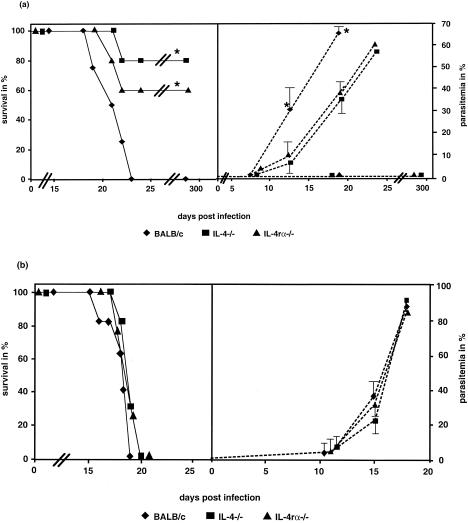FIG. 1.
Survival (solid lines) and parasitemia (dotted lines) of mice infected with the P. berghei ANKA strain. The mice were infected i.v. in the tail with 400 (a) or 800 (b) sporozoites. The data are representative of two independent experiments with five animals per group. (a) The wild-type BALB/c mice showed a 100% mortality rate, while 80% of the IL-4−/− mice and 60% of the IL-4rα−/− mice survived the infection. PCR analyses of the blood from mice that survived the infection showed that no parasites were detectable after 20 days p.i. (data not shown). Statistical analyses of the survival rates were done with the Kaplan-Meier test, and differences were found between the wild-type control versus the IL-4−/− and IL-4 α−/− mice (P < 0.05). The values for parasitemia represent the arithmetic means ± standard deviations. The susceptible animals died and had a high parasitemia (up to 70% parasitized erythrocytes). The BALB/c group showed a significantly higher parasitemia at 13 and 18 days p.i. than the KO groups. (b) All groups of died with high parasitemia, and there were no significant differences between their survival rates and parasitemia. The sporozoites were prepared from one batch of infected A. stephensi mosquitoes. All groups of mice were infected with this batch to avoid differences in one experiment due to different viabilities of the sporozoites.

